Recommended illumination levels
Architects of development houses usually select the locations for switches, receptacles, and luminaires at a quality and price level determined by the builder. However, purchasers of architect-designed, custom-built homes usually have an opportunity to decide on the selection of luminaires and exert some influence over price, quality, and locations that suit their preferences.
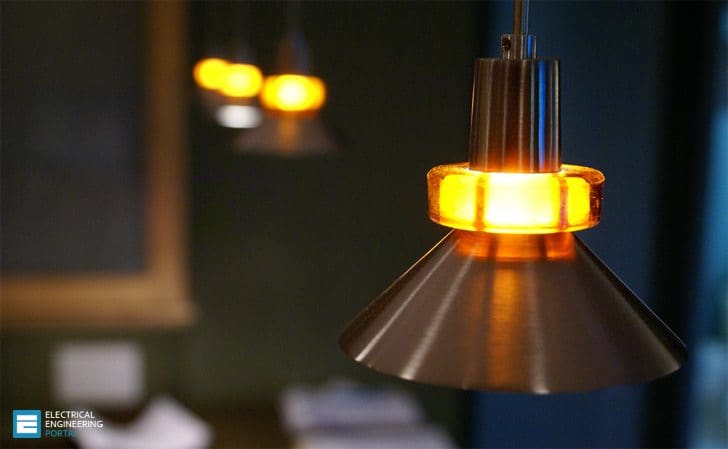
In either case, the homeowner must provide the task and accent luminaires needed to supplement the lumens from the permanent ambient luminaires to arrive at the recommended illumination levels.
Dimmer switches give the homeowner additional control over the illumination, permitting it to be varied according to the desired mood for the room-bright for parties and festive occasions and subdued for relaxation.
Ok, these are the residential room lighting topics to discuss about //
- Family Room lighting
- Dining room lighting
- Kitchen lighting
- Bathroom lighting
- Bedroom lighting
- Laundry room lighting
- Basement lighting
- Light dimmer applications
1. Family Room Lighting
The family room is the recreation and entertainment center in modern homes. Lighting plans for these rooms closely resemble those for living rooms. Lighting will include permanent lighting fixtures supplemented by task and accent luminaires. Accent lighting can highlight such features as pictures and bookcases.
According to Table 1, family rooms should have 70 fc of illumination.
Table 1 – Lighting requirements for homes //
| Room | lm/ft2 | fc |
| Living room | 80 | 70 |
| Family room | 80 | 70 |
| Dining room | 45 | 70 |
| Kitchen | 80 | 70 |
| Bathroom | 65 | 50 |
| Bedroom | 70 | 30 |
| Hallway | 45 | 30 |
| Laundry | 70 | 50 |
| Workshop | 70 | 70 |
Family rooms typically include a sofa, various upholstered chairs, and perhaps a table with chairs for reading, playing games, studying, or doing homework. Threeway table and floor lamps providing 800 to 1700 lm with incandescent or fluorescent lamps can supply the necessary task lighting.
Dimmer-equipped recessed or track lighting permits the illumination level to be adjusted for glare-free TV or computer screen viewing.
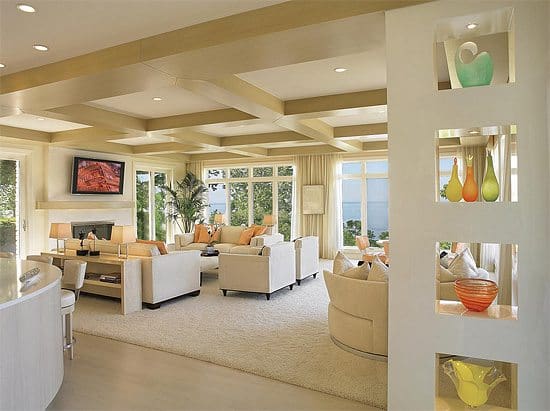

2. Dining room lighting
Dining rooms or spaces typically have a chandelier mounted directly above the likely position of the dining table. It is likely to be the centerpiece of the room as well as the principal source of ambient illlumination. According to Table 1, ambient lighting should be 70 fc.
A wall-mounted dimmer will permit the light from the chandelier to be controlled to set the mood of the room. Most dining rooms have supplementary lighting at the buffet or sideboard that can be provided by sconces or table lamps.


3. Kitchen Lighting
The IESNA recognizes the need for two levels of task lighting in a kitchen:
- Category D for general lighting and
- Category E for such critical tasks as reading labels and recipes, and slicing and dicing food.
According to Table 1, 80 lm/ft2 is recommended for kitchens. In modern kitchen lighting design, a central dome luminaire is supplemented by recessed lights. Under-cabinet luminaires are widely used to increase countertop illumination.
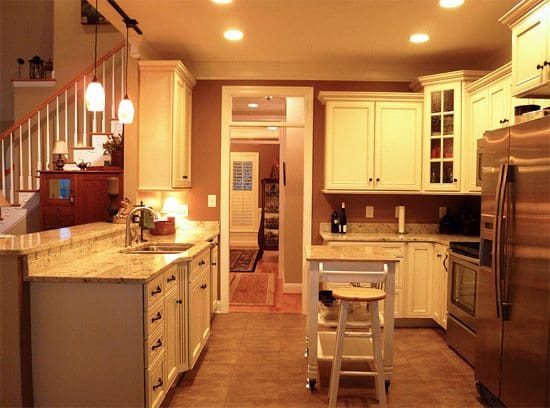

4. Bathroom lighting
Bathrooms need bright general lighting that can be supplied by permanent wall or ceiling-mounted luminaires with incandescent or fluorescent lamps mounted above or around the mirror. According to Table 1, ambient bathroom lighting should be 70 fc.
Some bathrooms are fitted with infrared heat lamps to assist in after-bath drying and to supplement room heating during cold weather. These lamps can be controlled by a timing switch that shuts them off after a set period.


5. Bedroom lighting
Modern bedrooms typically have ceiling dome lights for general-purpose lighting and separate task luminaires for bedside tables or bed headboards. According to Table 1, ambient bedroom lighting should be about 30 fc.
An overhead light in a walk-in closet controlled by a doorframe switch avoids fumbling for a light switch in the dark. Light for reading in bedrooms is typically provided by adjustable reading lamps with incandescent or halogen bulbs on bedside tables on both sides of queen- and king-size beds.


Bedrooms with twin beds are likely to have a dual-lamp luminaire with separate switches on a night table between the beds. Bedrooms often have a floor lamp or torchieres to provide subtle accent lighting effects. They could provide enough light for reading if placed next to chairs located in the bedroom.
A table lamp can usually provide adequate lighting for a large mirror on a bedroom bureau.
The following statements are made about clothes closet lighting installations:
- On the wall above the closet door, provided the clearance between the fixture and a storage area where combustible material may be stored within the closet is not less than 18 in.
- On the ceiling over the area which is unobstructed to the floor, maintaining an 18 in. clearance horizontally between the fixture and a storage area where combustible material may be stored within the closet.
- Pendants shall not be installed in clothes closets.
6. Laundry room lighting
Laundry rooms are separate rooms or spaces on the first floors of homes where a washing machine, clothes dryer, utility sink, and perhaps an ironing board are located.
The recommended ambient lighting for these rooms is 50 fc, primarily from ceiling or wall-mounted luminaires, to minimize the shock hazard presented by the close proximity of a sink and plumbing and metal appliance cabinets if a ground fault should occur.
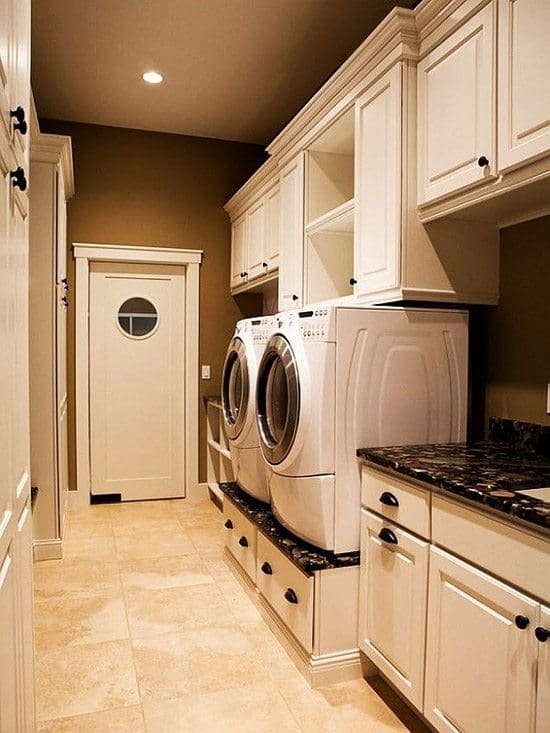

7. Basement lighting
The basements of most new homes are unfinished, so their lighting requirements are usually met with porcelain lampholders fastened to overhead joists or finished ceilings. Lampholders installed on ceilings above stair landing are controlled by three-way switches, while those located strategically around the basement are actuated by pullchain switches.
They are generally placed at enough locations to assure a minimal level of illumination throughout the entire basement.
Other recommended locations are over the utility sink and a possible site for a workbench. GFCI wall receptacles for powering tools or other service equipment must be fastened to studs. The lampholders will be in a 15-A branch circuit, but the receptacles might be in a 20-A circuit. Exposed NM cable for the lamps and receptacles must be stapled to the joists.
The easy accessibility to these cables and lampholders simplifies the task of adding luminaires or receptacles if the basement is ever finished.
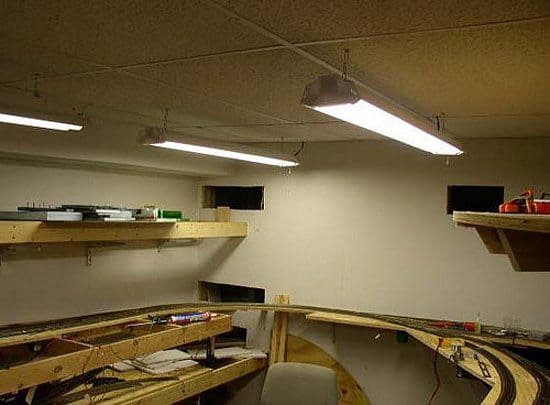

Light dimmer applications //
There are three kinds of dimmers:
- Incandescent lamp,
- Fluorescent lamp, and
- Fan speed controls.
Incandescent dimmers should not be used to dim standard fluorescent tubes or low-voltage lighting or to control ceiling fan speed, because their “chopped” current output can damage them. Also, receptacles should not be controlled by incandescent dimmers because fans, vacuum cleaners, power tools, and other inductive loads that might be plugged into them could be damaged.
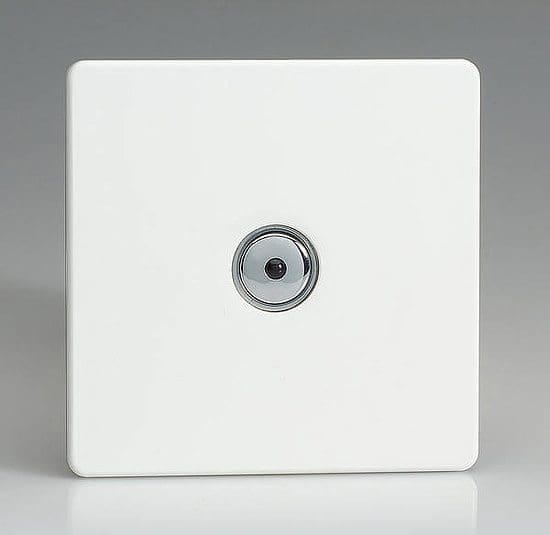

However, some compact fluorescent bulbs with integral electronic ballasts marketed as incandescent lamp replacements can be safely controlled by incandescent dimmers if the manufacturer states this on the lamp cartons.
Dimmers rated to 600 W have bar coil filters, while those in the 800- to 2000-W range contain more effective toroidal filters. Precautions taken to minimize or eliminate the effects of RFI from dimmers include keeping audio and microphone cables away from dimmer wiring, the use of low-impedance microphone cables and shielded audio cables, and the proper grounding of all equipment.
Single-pole and three-way dimmers
Single-pole incandescent dimmers can replace single-pole switches and still provide on/off switching as well as lighting control from one location. Three-way dimmers can be used in a three-way circuit for lighting control from two locations.
Only one three-way dimmer is needed with one three-way switch, but dimming is possible from only one location.
Digital light controls
Digital lighting control is a new development that is an improvement over existing lighting controls for a wide range of applications. Digital dimmers provide soft-on, fade-off switching as a result of their internal microcontroller chips. When turned on, illumination gradually increases to the selected levels. When they are turned off, light gently fades.
Reference // Handbook of electrical design details – Neil Sclater, John E. Traister (purchase book from Amazon)






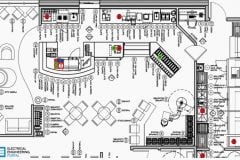


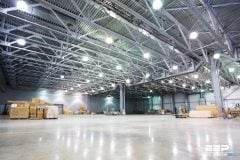

What is the reference for Table 1?
Is not fc and lm/ft2 mean the same?
Hello, may I ask where you reproduced the light levels in table 1 from?
Many Thanks, Nad